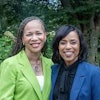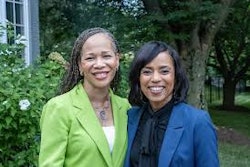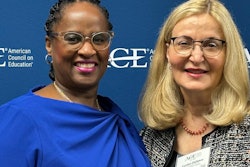Mary Breckinridge was born into high society in the late 1880s. Her father was a congressman and ambassador to Russia; her grandfather a vice president. She grew up in cosmopolitan circles, educated by private tutors in Washington, D.C., and St. Petersburg, Russia. That she would become a champion of improving health care for Americans living in rural poverty is not an intuitive leap of logic.
It was personal tragedy that brought Breckinridge to that path. Her background did not insulate her from the dangers of childbirth and early childhood illness so prevalent at the time. After marrying for the second time in 1912, Breckenridge moved to rural Arkansas with her husband, where she gave birth to two children, both of whom passed away before they turned 5 years of age.
The tragically early deaths of her children helped fuel Breckenridge’s resolve to improve health conditions for women living in parts of the country cut off from easy access to hospitals and doctors. Prior to her marriage, she trained as a nurse, but, after her children died and the breakup of her marriage, she traveled to France and England, training in nurse midwifery in England. She returned to rural Kentucky to found Frontier Nursing Service in 1925.
In its early days, FNS was organized as a group of rural health care outposts manned by nurse-midwives. At the time, no nurse midwifery courses were available in the United States, so women had to go to England for their education, as Breckinridge had done. With the advent of World War II, sending women overseas became much less practical. Thus, in 1939, Breckinridge opened her own nurse-midwifery school, which today is known as Frontier Nursing University, 77 years later.
Since its beginnings, the nursing service had a strong emphasis on serving the underserved, famously sending its nurses out on horseback to remote settlements in the mountainous areas of Leslie and Clay counties in Kentucky. Midwives ventured to such picturesquely named hamlets as Confluence, Cutshin and Hell-for-Certain.
For decades, Frontier focused its efforts in Kentucky, but the social context inevitably changed. With a declining birthrate in the 1960s, Frontier nurses’ services were less vital to the region. In the 1980s, Frontier changed its academic model to distance learning. With the advent of online learning, Frontier jumped on board.
Although nurses on horseback have not been a part of the equation since the 1960s, Frontier hews to its rural focus, albeit one that is now dispersed across the country. The school, which offers degrees and certificates in nursing and midwifery, educates a student population that is primarily female and primarily from rural areas. The objective is to allow students to remain in their home communities while working toward a degree, according to Frontier representatives.















